Australian Tropical Rainforest Plants - Online edition
Endiandra impressicosta C.K.Allen

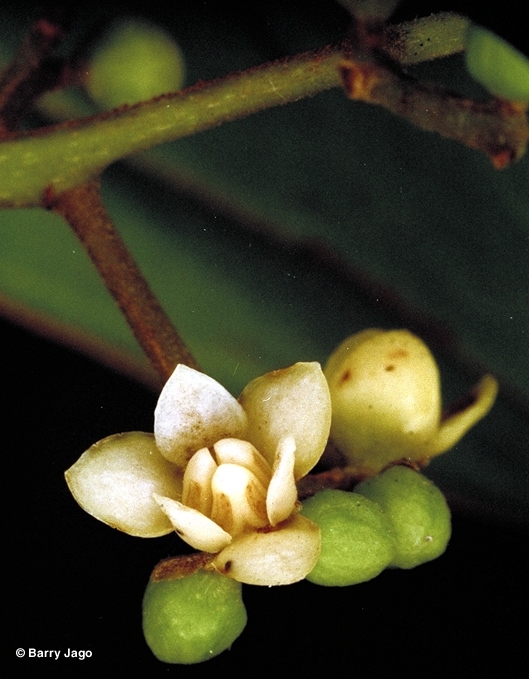
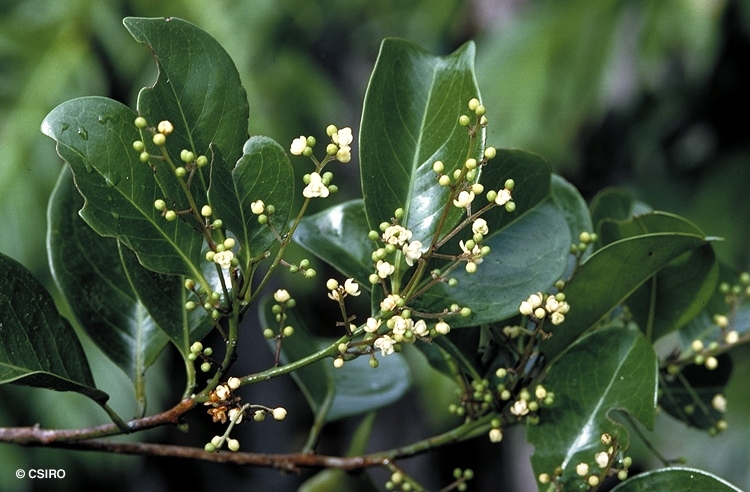
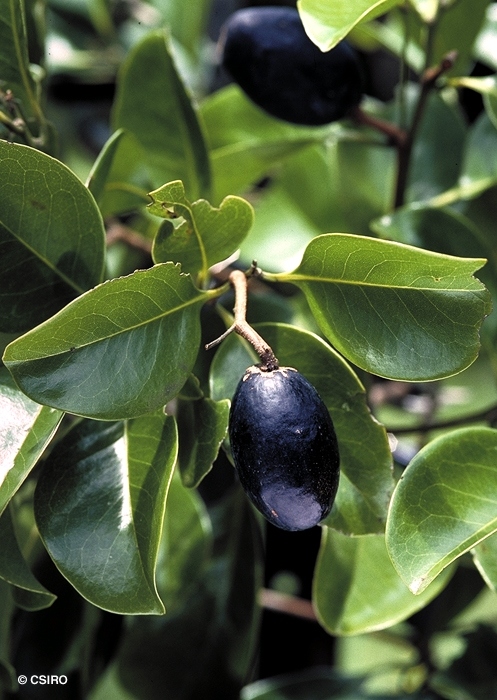


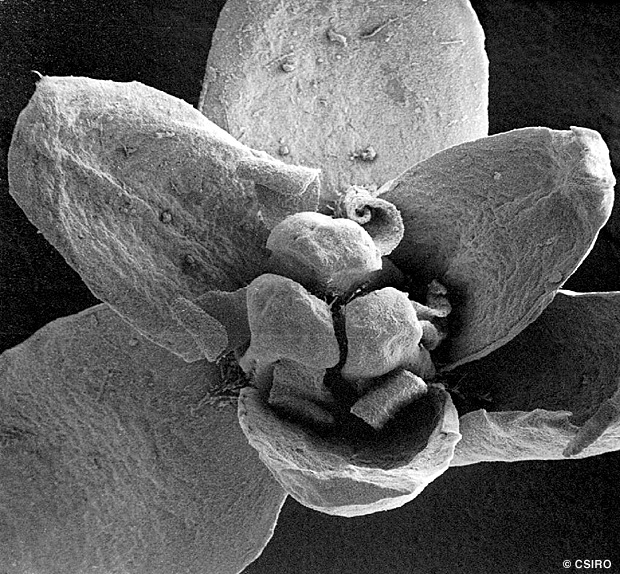
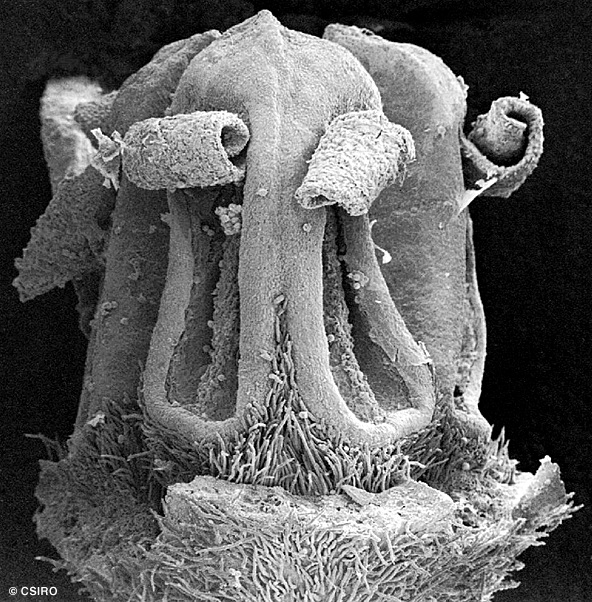
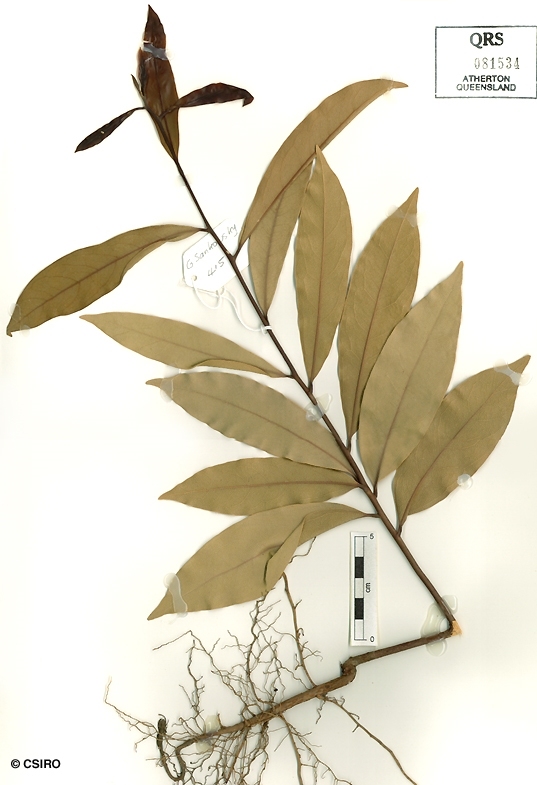

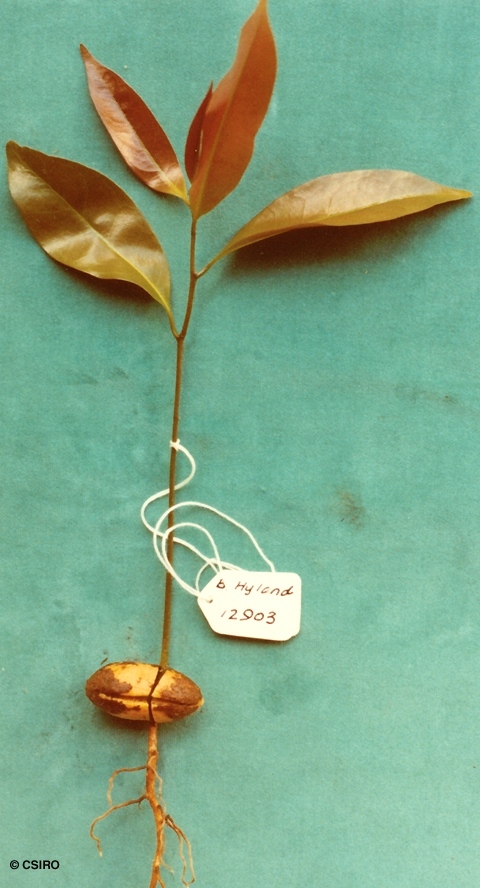
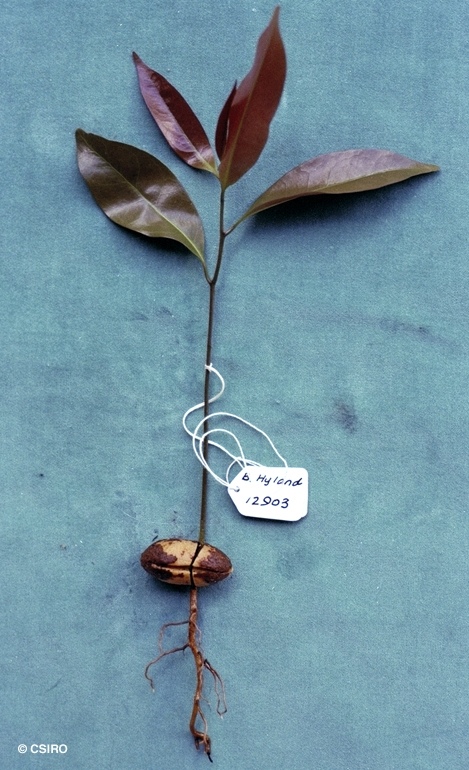
Allen, C.K. (1942) Journal of the Arnold Arboretum 23: 151. Type: British New Guinea: Middle Fly River, Lake Daviumbu, Brass 7619 (type, AA) .. Aug. 1936;.
Sunken Nerve Walnut; Steelbutt
A thin pale brown layer generally visible beneath the subrhytidome layer before the first section of the outer blaze. Blaze usually conspicuously layered and rather hard to cut.
Twigs terete or fluted, glabrous, clothed in straight, appressed, pale brown hairs when very young. Leaf blades about 7.5-14.5 x 4-8 cm, green on the underside, glabrous, very sparsely scattered, straight, appressed, pale brown hairs present on very young leaves. Lateral veins forming loops well inside the blade margin, sometimes tending to form a double series of loops. Young leaves bright red. Midrib depressed on the upper surface. Petioles channelled on the upper surface. Oil dots visible with a lens.
Fruits ellipsoid, about 45-60 x 30-37 mm. Seed about 38-47 x 20-27 mm. Cotyledons cream.
This species grows large enough to produce millable logs but is seldom utilized for sawn timber. The wood is quite hard and very abrasive to mechanical tools. Wood specific gravity 0.95-1.10. Hyland (1989).





